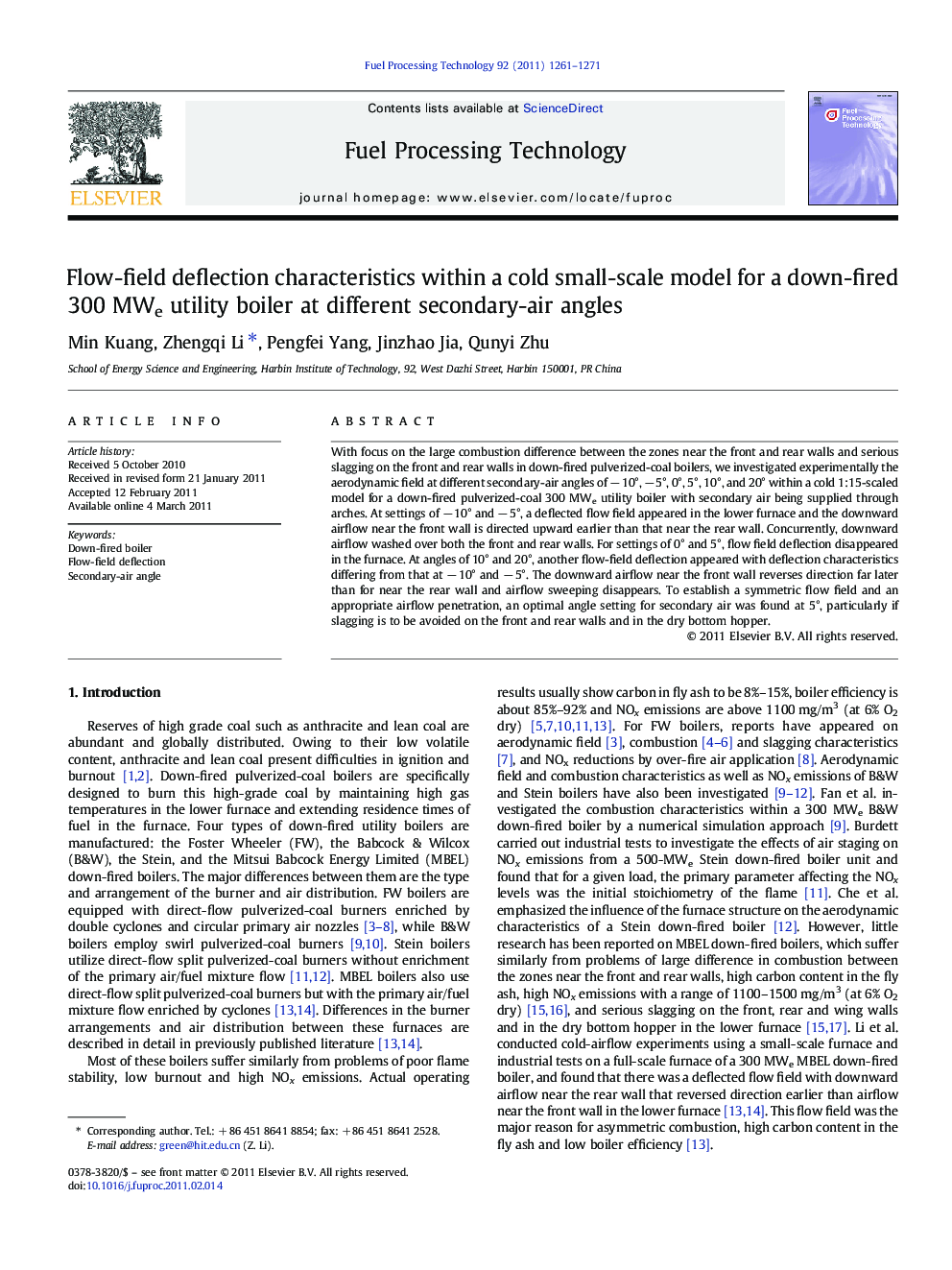| Article ID | Journal | Published Year | Pages | File Type |
|---|---|---|---|---|
| 210881 | Fuel Processing Technology | 2011 | 11 Pages |
With focus on the large combustion difference between the zones near the front and rear walls and serious slagging on the front and rear walls in down-fired pulverized-coal boilers, we investigated experimentally the aerodynamic field at different secondary-air angles of − 10°, −5°, 0°, 5°, 10°, and 20° within a cold 1:15-scaled model for a down-fired pulverized-coal 300 MWe utility boiler with secondary air being supplied through arches. At settings of − 10° and − 5°, a deflected flow field appeared in the lower furnace and the downward airflow near the front wall is directed upward earlier than that near the rear wall. Concurrently, downward airflow washed over both the front and rear walls. For settings of 0° and 5°, flow field deflection disappeared in the furnace. At angles of 10° and 20°, another flow-field deflection appeared with deflection characteristics differing from that at − 10° and − 5°. The downward airflow near the front wall reverses direction far later than for near the rear wall and airflow sweeping disappears. To establish a symmetric flow field and an appropriate airflow penetration, an optimal angle setting for secondary air was found at 5°, particularly if slagging is to be avoided on the front and rear walls and in the dry bottom hopper.
Research highlights►Asymmetric combustion is universal in MBEL down-fired boilers. ►The secondary-air angle affects strongly the aerodynamic field in the lower furnace. ►Cold airflow experiments were conducted to establish an optimal secondary-air angle. ►An optimal setting was recommended according to experimental results.
